
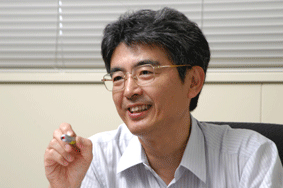
Despite their increasing prevalence in developed countries, the molecular mechanisms behind autoimmune diseases and allergy remain poorly understood. The eventual goal of HiranoˇÇs Research Group (Lab. Developmental Immunology, Osaka Univ, Osaka and the Cytokine Signaling Research Group, RCIA, RIKEN, Yokohama) is to contribute to the elucidation of the molecular and immunological mechanisms of autoimmune diseases and allergy from the viewpoint of signal transduction within the immune system. In addition, we are currently focusing on Zinc and Zinc-signaling and their roles in development, regenerative medicine, immunity, allergy, cancer metasatasis.
More than two decades ago, we cloned interleukin 6 (IL-6) in 1986 (Hirano et al, Nature 1986), and are continuously exploring molecular processes related to IL-6 and the IL-6 receptor, focusing on STAT3 (Signal Transducer and Activator of Transcription 3), various members of the Gab family of proteins and, most recently, the largely unknown universe of signaling through zinc transporter proteins, to reveal the role of zinc in immune functions.
The purposes of our research team are 1) elucidation of the roles of cytokines, in particular gp130 F759 mutation in autoimmune diseases, 2) clarification of the signaling mechanisms of cytokine actions and regulation of immune response, 3) clarification of molecular mechanisms of mast cell degranulation and the roles of mast cells in inflammation and autoimmune diseases, 4) clarification of the molecular mechanisms of zinc transporters and zinc-signaling, and 5) clarification of the roles of zinc, zinc transporters and zinc-signaling in development, regenerative medicine, immunity, allergy and cancer. This last project is intimately related with other projects, #1-#4.
Background
For these purposes, we investigate the interleukin 6 (IL-6) system as a model of cytokine. IL-6 is a typical cytokine exerting multiple biological functions through its receptor in a variety of cells by regulating cell growth, differentiation and survival (Hirano, Int Rev Immunol., 1998). IL-6 receptor consists of a ligand binding a-chain and a signal transducer, gp130 (Hirano et al, Cytokine Growth Factor Reviews, 1997, Kamimura et al., ). Gp130 is shared among receptors for leukemia inhibitory factor, ciliary neurotrophic factor, oncostatin M, IL-11 and cardiotropin-1, and essential in generating signals of these IL-6-related cytokine family. It associates with JAK1, JAK2, and TYK2, and its tyrosine residues are phosphorylated upon stimulation. The tyrosine 759 of gp130 is the binding site for SHP-2. The four tyrosines in the carboxy terminal are required for STAT3 activation (Fukada et al, Immunity, 1996). We showed that STAT3 is involved in the cell cycle arrest and macrophage differentiation of a mouse leukemia cell line M1 (Yamanaka et al., EMBO J., 1996, Nakajima et al EMBO J., 1996). It is also required for G1 to S cell cycle transition and anti-apoptotic signals through gp130 (Shirogane et al., Immunity, 1999). The tyrosine 759 is required for the recruitment of SPH-2 and SOCS3 on gp130, formation of the complex consisting of SHP-2, Gab1/2 and PI3-K, gp130-induced ERK MAP kinase activation and gp130-mediated neurite outgrowth of PC-12 cells and the transition of S to G2/M in the cell cycle (Ihara et al, EMBO J., 1997, ). SHP-2 is a protein tyrosine phosphatase bearing two SH2-domains. Its drosophila homolog Corkscrew (CSW) acts downstream of the receptor tyrosine kinases Sevenless and is essential for eye development. Biochemical and genetic analysis of Drosophila eye development revealed that Daughter of Sevenless (DOS) is a substrate for CSW. DOS has structural homologies with mammalian adaptor molecules IRS-1, IRS-2 and Gab1. Gab1 is a 115kD molecule originally identified as a Grb2-associated docking protein. We showed that Gab1 acts as an adaptor molecule in transmitting signals to the ERK MAP kinase for the cytokine receptor gp130 (Takahashi-Tezuka et al, MCB, 1998). Furthermore, we cloned a novel member of Gab family and named it Gab2 (Nishida et al, Blood, 1999 ). We showed that Gab1 and Gab2 are variably tyrosine-phosphorylated through a variety of receptor, including gp130, IL-2 receptor, IL-3 receptor, TPO receptor, c-Kit, TCR and BCR. To reveal the functions of Gab1 and Gab2 in vivo, we generated Gab1 and Gab2 knockout mice. Gab1-deficient embryos died in utero and displayed developmental defects in heart, placenta, and skin, which are similar to phenotypes observed in mice lacking signals of the hepatocyte growth factor/scatter factor, platelet-derived growth factor, and epidermal growth factor pathways. Consistent with these observations, ERK MAP kinase activation in response to these growth factors or to stimulation of the cytokine receptor gp130 is disturbed in Gab1-/- embryonic fibroblast (Itoh et al, MCB,2000 ). On the other hand Gab2 deficient mice are born and grow well. Interestingly Gab2 dficietn mice showed a reduced number of mast cells. In consistent with this we showed that Gab2 is essential for stem cell factor (c-kit ligand) signaling (Nishida et al, Blood, 2002). Furthemore, Gab2 is required fort mast cell degranulation, in particular, granule translocation to the plasma membrane (Nishida et al., J. Cell Biol., 2005). These results indicate that Gab1 is a common player in a broad range of growth factor and cytokine signaling pathways linking ERK MAP kinase activation and Gab2 is specifically involved in mast cell development and its funciton.
1) Gp130 mutation and autoimmune arthritis: F759 mice
To further elucidate the in vivo roles of gp130-mediated each of signal transduction pathway, we made knockin mice expressing gp130 mutated at the tyrosine residues required for the STAT3-mediated signal and the SHP2/Gab/MAPK-mediated signal, respectively(Ohtani et al, Immunity, 2000). Our results shows that gp130-mediated STAT3 signal plays important roles in B cell differentiation and Ig production. Furthermore, tyrosine 759 of gp130, SHP-2 binding site, is positively involved in gp130-mediated MAPK activation, while it negatively regulates gp130-induced STAT3 activation and Ig production. These results indicate the balance of the contradictory signals generated through gp130 determines the final output of the biological activity of IL-6. Interesting finding is that the knockin mice expressing mutant gp130 with a defective in the SHP2 binding site (F759 mice) spontaneously generate autoimmunity and rheumatoid arthritis (RA)-like disease as aged (Atsumi et al., JEM, 2002). Furthermore, we show that excessive IL-6 signaling drives hyperproliferation of CD4+ T cells, which then attack the joints. The disease development in F759 mice depends on CD4+ T cells, but not on cytolytic CD8+ T cells or antibody-producing B cells. Importantly, the CD4+ cells did not appear to cause disease because of an affinity for joint-specific antigens. Rather, the cells simply proliferated excessively in the mutant mice. This hyperproliferation was not the fault of the T cell, as wild-type CD4+ T cells also multiplied excessively and caused disease when transferred into irradiated mutant mice. Rather, the gp130 mutation caused nonhematopoietic cells to produce excess IL-7--a growth factor that triggers T cell proliferation. In fact, anti-IL-7 antibody inhibited not only T cell proliferation but also arthritis, indicating that IL-6 family-gp130-STAT3-IL-7 cascade induces arthritis. These data suggest that IL-6, which is elevated in the serum and joints of patients with RA, might exacerbate disease by inducing IL-7 and thus driving T cell activation. Based on these observations, we are proposing a model: Interaction of immune system and non-immune system causes tissue specific autoimmune disease (Sawa et al., JEM, 2006).
2) Role of gp130 and Zinc Signaling in the Immune System
The effect of IL-6/gp130 signaling on dendritic cell (DC) functions related to antigen presentation. Previously, we reported the immunosuppressive effect of IL-6 through the down-regulation of MHC class II molecules on DCs, in vivo and in vitro (Park et al, J. Immunol., 2004). Further, we were able to clarify the detailed molecular mechanisms of this effect and to find that IL-6/gp130 signaling activates the lysosomal enzyme cathepsin S through STAT3 and causes a reduction of the MHC class II ab-dimer level in DCs and subsequently CD4+ T cell activation (Kitamura et al., Immunity, 2005).
In a breakthrough discovery published in Nature in 2004 (Yamashita et al, Nature, 2004), we identified the zinc (Zn) transporter Zip6 (also known as Liv1) as the target gene of the IL-6 cytokine signaling molecule STAT3 and further demonstrated that Zip6 plays an important role in the cell migration that takes place during the gastrulation process in the early development of the zebrafish embryo. Zn is a trace element that is essential for the function of many enzymes and transcription factors. Zn deficiency results in defects in innate and acquired immune responses. However, little is known about the mechanism(s) by which Zn affects immune cell function. We found that stimulation with the toll-like receptor (TLR) 4 agonist lipopolysaccharide (LPS) altered the expression of Zn transporters in DCs, thereby decreasing intracellular free Zn. A Zn chelator mimicked the effects of LPS, whereas Zn supplementation or overexpression of the gene encoding Zip6, a Zn transporter whose expression was reduced by LPS, inhibited LPS-induced upregulation of major histocompatibility complex class II and costimulatory molecules. These results have led to the establishment of a link between TLR signaling and Zn homeostasis, and strongly suggest that intracellular Zn is closely related to DC maturation as well as to the regulation of MHC class II molecules through endocytosis and trafficking (Kitamura et al., Nature Immunology, 2006). In order to further elucidate the intracellular role of the Zn in DC maturation, we are currently trying to identify the target molecule of Zn in signaling cascades related to DC maturation.
3) Molecular Mechanisms of Mast Cell Degranulation
The immunological and molecular mechanisms of mast cells in allergy, inflammation, and autoimmune diseases were investigated. Most importantly, the degranulation process of mast cells was dissected. First, Fc epsilon RI stimulation triggers microtubule polymerization and granule translocation to the plasma membrane in a calcium-independent manner. Second, the granules fuse with the plasma membrane in a well-characterized calcium-dependent manner. Furthermore, it was shown that not Lyn/SLP-76 but the Fyn/Gab2/RhoAˇ˝signaling pathway plays a critical role in the calcium-independent microtubule-dependent pathway (Nishida et al., J Cell Biol. 2005). Our present research concerns mainly the clarification of the molecular mechanism of calcium-independent, microtubule-dependent granule translocation. Very recently, it was found that Zn is required for Fc epsilon RI induced granule translocation to the plasma membrane, suggesting that the Zn chelator is a potential new antiallergic agent. Zn is also required for cytokine production in mast cells. In addition, it was shown that zinc deficiency in mast cell prevents the translocation of protein kinase C (PKC) as well as downstream events such as the phosphorylation and nuclear translocation of NFkB and the production of such cytokines as IL-6 and TNF alpha (Kabu et al., J. Immunol. 2006). Based on these findings, we are now searching for Zn-associated molecules that regulate granule translocation and cytokine production in mast cells. Furthermore, we are trying to identify tubulin-associated molecules involved in granule translocation and to establish knock-in mice expressing a mutant Gab2 molecule in order to further dissect Fc epsilon RI mediated signaling and to better clarify the in vivo function of mast cells in allergy, inflammation and autoimmune diseases.
4) Zinc signaling and its roles in development, regenerative medicine, and cancer metasatasis
The regulation of cell movement plays critical roles in early embryonic development and the immune responses. It is suggested that gp130/JAK/STAT3 signal regulates cell movement. SpemannŽŐs organizer can specify the fate of the surrounding tissue and initiate highly integrated cell movements during gastrulation. Although the cell movement that occurs during gastrulation is well understood, little is known of the molecular mechanisms that initiate and coordinate this process. We showed that mouse and zebrafish STAT3 is required for the correct morphogenetic movements during gastrulation (Yamashita et al, Dev. Cell, 2002 and Miyagi et al., J. Cell Biol., 2004). To clarify the molecular mechanisms by which gp130/JAK/STAT3 signal transduction pathway regulates cell movement, we identified zinc transporter, Liv1/zip6 as the target genes of STAT3 (Yamashita et al, Nature, 2004). This finding made us being interested in the relationship between zinc and cytokine and/or growth factor-mediated signaling. We are currently investigating how cytokine and/or growth factor signaling link with zinc. Furthermore, we hypothesize the presence of zinc signaling. Zinc deficiency causes taste impairments, immune deficiency, skin problems, and growth and mental retardation. In addition, it is well known that zinc is a structural constituent of a great number of proteins, including enzymes in cellular signaling pathways and transcriptional factors, and it is essential for their biological activity. However, zinc, unlike calcium, has not been thought of as a cellular signaling molecule. We showed that during maturation of dendritic cells, intracellular free zinc is decreased and this lowering free zinc level is required for DC maturation (Kitamura et al, Nature immunol., 2006).This results indicate that intracellular free zinc level is not kept constant, rather it is changed in response to the extracellular stimuli, such as cytokines, growth factor and TLR-ligand. We are continuously investigating the molecular mechanisms how zinc is transported through zinc transporters to its target molecules (RIKEN RESEARCH September Vol.1 No. 3). We are also trying the roles zinc and zinc transporters in development, regenerative medicine, immunity, allergy and cancer progression.
Perspectives
Our group has been studying these signaling molecules using a broad variety of tools employed in molecular biology, cell biology, immunology, or development. When it turned out that STAT3 has an important function in development, we expanded our activities into developmental biology. When Zn transporter proteins were found be involved in signaling processes orchestrated by STAT3, we set up an entirely new research program to study the biological function of zinc.
Presently, the research group at RCAI is focusing on signaling processes relevant to the immune system; in particular, it is investigating the molecular mechanisms of IL-6/IL-6 family cytokine-mediated immune responses in health and disease, as well as trying to elucidate the molecular mechanisms of mast cell function, including degranulation and cytokine production related to allergy, autoimmune diseases, and inflammation. The research group based at Osaka University is focusing on the more basic aspects of IL-6-related signaling molecules and their functional roles in relation to development, oncogenesis, and immunity. Osaka group is also paying a great efforts to better understanding the molecular mechanisms of zinc signaling and zinc transporters. Of course, all projects of HiranoˇÇs research group are intimately related each other. Osaka group and Yokohama RCAI group are doing very close collaboration by daily communication through internet TV meeting system as well as frequent exchange of the researchers.
Partial list of publications
229) Kamon, H., T. Kawabe, H. Kitamura, D. Kamimura, G.-H. Jin, T. Kaisyo, S. Akira, A. Iwamatsu, H. Koga, K. Ishihara, M. Murakami and T. Hirano. TRIF-GEFH1-RhoB cascade regulates surface expression of MHC class II in dendritic cells that is critical for CD4+ T cell activation. EMBO J. in press (Published online: 17 August 2006) (PubMed)
227) Kitamura, H., H. Morikawa, H. Kamon, M. Iguchi, S. Hojyo, T. Fukada, S. Yamashita, T. Kaisho, S. Akira, M. Murakami and T. Hirano. Toll-like receptor-mediated regulation of zinc homeostasis influences dendritic cell function. Nature Immunol.7:971-977, 2006 (Published online: 6 August 2006; | doi:10.1038/ni1373) (Research Highlights in Nature, 17 August 2006 Nature 442, 722, 2006) (RIKEN RESEARCH September Vol.1 No. 3) (PubMed)
226) Kabu, K., S. Yamasaki, D. Kamimura, Y. Ito, A. Hasegawa, E. Sato, H. Kitamura, K. Nishida, and T. Hirano. Zinc is required for FceRI-mediated mast cell activation. J. Immunol. 177:1296-1305, 2006. (PubMed)
224) Sawa, S., D. Kamimura, G.-H. Jin, H. Morikawa, H. Kamon, M. Nishihara, K. Ishihara, M. Murakami, and T. Hirano. Autoimmune arthritis associated with mutated IL-6 receptor gp130 is driven by STAT3/IL-7-dependent homeostatic proliferation of CD4+ T. J. Exp. Med. 203:1459-1470, 2006. published on line 22 May 2006, 10.1084/jem.20052187. (In This Issue) (J Exp Med) (Research Highlights in Nature Reviews Immunology July 2006) (PubMed)
223) Kitamura, H., H. Kamon, S. Sawa, S-J. Park, N. Katsunuma, K. Ishihara, M. Murakami and T. Hirano. IL-6-STAT3 controls intracellular MHC classII ab-dimer level through Cathepsin S activity in dendritic cells. Immunity, 23: 491-502, 2005. (PubMed). (Immunity) (Science's STKE) (Research Highlights in Nature Immunology 7:17,2006)
222) Nishida, K., S. Yamasaki, Y. Ito, K. Kabu, K. Hattori, T. Tezuka, H. Nishizumi, D. Kitamura, R. Goitsuka, R.S. Geha, T. Yamamoto, T. Yagi, T. Hirano. FceRI-mediated mast cell degranulation requires calcium-independent microtubule-dependent translocation of granules to the plasma membrane. J. Cell Biol. 170:115-126, 2005 (PubMed). (JCB) (In This Issue)
213ˇËYamashita, S., C. Miyagi, T. Fukada, N. Kagara, Y.-S. Che & T. Hirano. Zinc transporter LIVI controls epithelial-mesenchymal transition in zebrafish gastrula organizer. Nature 429: 298-302, 2004, published online 5 May 2004; doi:10.1038/nature02545 (PubMed)ˇˇ(Nature)
Review-76) Yamashita, S. and Hirano, T. Stats in cell mobility and polarity during morphogenetic movement. in Signal Transducers and Activators of Transcription (STATs):Activation and Biology, edited by P. B. Sehgal, D. E. Levy and T. Hirano, Kluwer Academic Publishers, pp595-607, 2003.
Review-74) Kamimura, D., Ishihara, K., and Hirano, T. IL-6 signal transduction and its physiological roles:The signal orchestration model. Reviews of Physiology, Biochemistry and Pharmacology, 149ˇ§1-38, 2003. (PubMed)
200) Atsumi, T*., K. Ishihara*, D. Kamimura, H. Ikushima, T. Ohtani, S. Hirota, H. Kobayashi, S-.J. Park, Y. Saeki, Y. Kitamura, and T. Hirano. (*equal contribution). A point mutation of Tyr-759 in interleukin 6 family cytokine receptor subunit gp130 causes autoimmune arthritis. J. Exp Med. 196: 979-990, 2002 (PubMed),introduced by Nature Immunology Nov.issue, 2002
197) Yamashita, S., C. Miyagi, A. Carmany-Rampey, T. Shimizu, R. Fujii, A. F. Schier and T. Hirano. Stat3 controls cell movements during zebrafish gastrulation. Dev. Cell. 2: 363-375, 2002.(PubMed) (Evaluations and comments from leading biologists)
195) Nishida, K*., L. Wang, E*., Mori, S.-J. Park, M. Narimatsu, S. Itoh, S. Yamasaki, M. Fujishima, K. Ishihara, M. Hibi, Y. Kitamura, and T. Hirano (*equal contribution). Requirement of Gab2 for mast cell development and Kitl/c-Kit signaling. Blood. 99:1866-1869, 2002.(PubMed) RCAIˇˇ
Review-71) Hirano, T. Cytokines in autoimmune disease and chronic inflammatory proliferative disease. edited by Hirano, T. Editorial for Cytokine Growth Factor Rev, 13ˇ§297-298, 2002. (PubMed), RCAI
Review-70) Ishihara, K., and Hirano, T. IL-6 in autoimmune disease and chronic inflammatory proliferative disease. Cytokine Growth Factor Rev, 13:357-368, 2002. (PubMed), RCAI
180) Itoh, M., Yoshida, Y., Nishida, K., Narimatsu, M., Hibi, M., and Hirano, T. A role of Gab1 for heart, placenta, and skin development, and growth factors- and cytokines-induced ERK MAP kinase activation. Mol. Cell. Biol. 20, 3695-3704, 2000.(PubMed)(Abstract)(Full Text in MCB)
176) Ohtani, T., K. Ishihara, T. Atsumi, K. Nishida, Y. Kaneko, T. Miyata , S. Itoh, M. Narimatsu, H. Maeda, T. FukadaŽ¤, M. Itoh, H. Okano, M. Hibi and T. Hirano. Dissection of signaling cascades through gp130 in vivo: Reciprocal roles for STAT3- and SHP2-mediated signals in immune responses. Immunity, 12, 95-105, 2000. (PubMed) (Full Text in Immunity)
Review-62) Hirano, T., K. Ishihara, M. Hibi. Roles of STAT3 in mediating the cell growth, differentiation, and survival signals relayed through the IL-6 family of cytokine receptors. Oncogene, 19: 2548-2556, 2000. (PubMed)
174) Shirogane, T., T. Fukada, J.M.M. Muller, D. T. Shima, M. Hibi, and T. Hirano, Synergistic roles for Pim-1 and c-Myc in STAT3-mediated cell cycle progression and anti-apoptosis. Immunity 11, 709-719, 1999. (PubMed) (Full Text in Immunity)
164) Fukada, T., T. Ohtani, Y. Yoshida, T. Shirogane, K. Nishida, K. Nakajima, M. Hibi, and T. Hirano. STAT3 orchestrates contradictory signals in cytokine-induced G1 to S cell cycle transition. EMBO J. 17: 6670-6677,1998 (Abstract)(PubMed) (Full Text in EMBO J).
159) Takahashi-Tezuka*, M., Y. Yoshida*, T. Fukada, T. Yamaguchi, Y. Yamanaka, K. Nakajima, M. Hibi, and T. Hirano. Gab1 acts as an adaptor molecule linking a cytokine receptor gp130 to ERK MAP kinase. Mol. Cell. Biol. 18:4109-4117, 1998. (equal contribution of the first two authors*) (PubMed)(Full Text in MCB)
Review-56) Hirano, T. Interleukin 6. The Cytokine Handbook, 3rd edition, edited by A. W. Thomson, Academic Press, pp197-228, 1998.
Review-55) Hirano, T. Interleukin 6 and its receptor: Ten years later. Intern. Rev. Immunol., 16:249-284, 1998 (Full Text)(PubMed)
Review-54) Hirano, T., K. Nakajima, and M. Hibi. Signaling mechanisms through gp130: a model of the cytokine system. Cytokine & Growth Factor Reviews, 8: 241-252, 1997 (Full Text) (PubMed) (CrossReference)
148) Fukada, T., M. Hibi, Y. Yamanaka, M. Takahashi-Tezuka, Y. Fujitani, T. Yamaguchi, K. Nakajima, and T. Hirano. Two signals are necessary for cell proliferation induced by a cytokine receptor gp130: involvement of STAT3 in anti-apoptosis. Immunity 5: 449-460, 1996. (Abstract) (PubMed)(Immunity on line for Full TEXT)
141) Nakajima, K., Y. Yamanaka, K. Nakae, H. Kojima, N. Kiuchi, M. Ichiba, T. Kitaoka, T. Fukada, M. Hibi and T. Hirano. A central role for Stat3 in IL-6-induced regulation of growth and differentiation in M1 leukemia cells. EMBO J. 15:3651-3658, 1996. (Abstract)(PubMed)
140) Yamanaka, Y., K. Nakajima, T. Fukada, M. Hibi, and T. Hirano. Differentiation and growth arrest signals generate through the cytoplasmic region of gp130 that is essential for Stat3 activation. EMBO J. 15:1557-1565, 1996. (Abstract) (PubMed)
98) Hibi, M., M. Murakami, M. Sito, T. Hirano, T. Taga and T. Kishimoto. Molecular cloning and expression of an IL-6 signal transducer, gp130. Cell 63:1149-1157, 1990.(PubMed)
73) Taga, T., M. Hibi, Y. Hirata, K. Yamasaki, K. Yasukawa, T. Matsuda, T. Hirano, and T. Kishimoto. Interleukin-6 triggers the association of its receptor with a possible signal transducer, gp130. Cell 58:573-581, 1989.(PubMed)
52) Yamasaki, K., T. Taga, Y. Hirata, H. Yawata, Y. Kawanishi, B. Seed, T. Taniguchi, T. Hirano, and T. Kishimoto. Cloning and expression of human interleukin 6 ( BSF-2/IFNb2 ) receptor. Science 241:825-828, 1988.(PubMed)
47) Hirano, T., T. Matsuda, M. Turner, K. Sato, G. Buchan, B. Tang, N. Miyasaka, M. Shimizu, R. Maini, M. Feldmann, and T. Kishimoto. Excessive production of interleukin 6/B cell stimulatory factor-2 in rheumatoid arthritis. Eur. J. Immunol. 18:1797-1801, 1988.(Abstract)
28) Hirano, T., T. Taga, K. Yasukawa, K. Nakajima, N. Nakano, F. Takatsuki, M. Shimizu, A. Murashima, S. Tsunasawa, F. Sakiyama, and T. Kishimoto. Human B cell differentiation factor defined by an anti-peptide antibody and its possible role in autoantibody production. Proc. Natl. Acad. Sci. USA. 84:228-231, 1987.(PubMed) (Anstract)
26) Hirano, T., K. Yasukawa, H. Harada, T. Taga, Y. Watanabe, T. Matsuda, S. Kashiwamura, K. Nakajima, K. Koyama, A. Iwamatu, S. Tsunasawa, F. Sakiyama, H. Matsui, Y. Takahara, T. Taniguchi, and T. Kishimoto. Complementary DNA for a novel human inteleukin (BSF-2) that induces B lymphocytes to produce immunoglobulin. Nature 324:73-76, 1986.(Abstract)(PubMed)
25) Hirano, T., T. Taga, N. Nakano, K. Yasukawa, S. Kashiwamura, K. Shimizu, K. Nakajima, K. H.Pyun, and T. Kishimoto. Purification to homogeneity and characterization of human B cell differentiation factor (BCDF or BSFp-2). Proc. Natl. Acad. Sci. USA. 82:5490-5494, 1985.(Abstract)(PubMed)
12) Teranishi, T., T. Hirano, N. Arima, and K. Onoue. Human helper Tcell factor(s)(ThF). II. Induction of IgG production in B lymphoblastoid cell lines and identification of T cell replacing factor-(TRF) like factor(s). J. Immunol. 128:1903-1908, 1982.(Abstract)(PubMed)
10) Hirano, T., T. Teranishi, H. Toba, N. Sakaguchi, T.
Fukukawa, and I. Tsuyuguchi. Human helper T cell factor(s)(ThF). I.
Partial purification and characterization. J. Immunol.
126:517-522,
1981.(PubMed)
Review-35) Hirano, T. Interleukin
6(IL-6). Chapeter 8, The Cytokine Handbook, edited by A.
Thomson, Academic Press, pp169-190, 1991.
Review-28) Hirano, T., and T.
Kishimoto. Chapter 14: Interleukin 6. In Handbook of Experimental
Pharmacology vol. 95/I "Peptide Growth Factors and Their
Receptors" edited by M. B. Sporn and A. B. Roberts, Springer-Verlag,
pp633-665, 1990.
|
|
|
Other Sites |
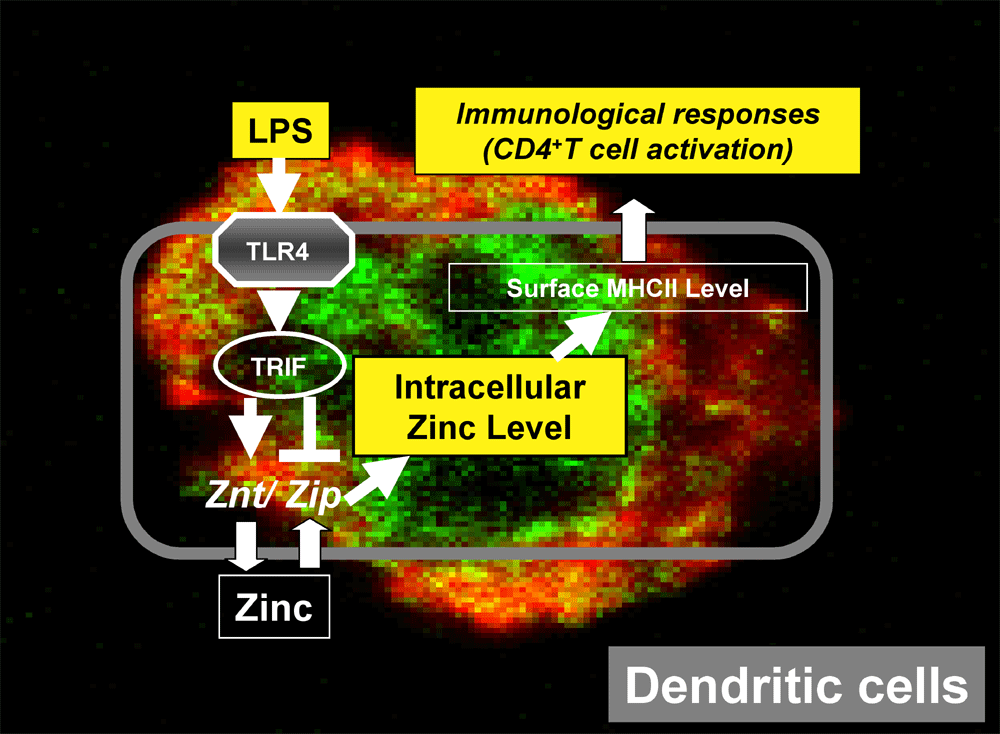
ˇˇ
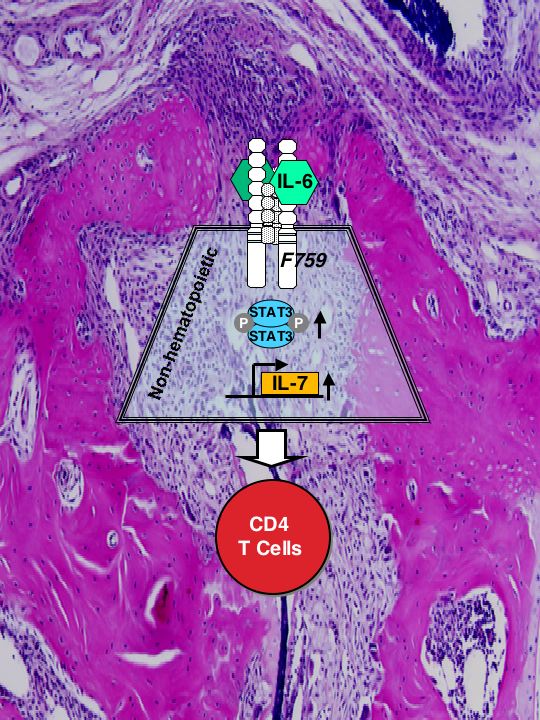
ˇˇ |
Hyperresponsiveness to the interleukin (IL)-6 family of cytokines triggers a spontaneous rheumatoid arthritis (RA)-like disease in mice (Atsumi et al, JEM 2002)(PubMed). Now, Sawa and colleagues show that excessive IL-6 signaling drives hyperproliferation of CD4+ T cells, which then attack the joints. IL-6 has been implicated in RA and other T cell-driven autoimmune diseases. Indeed, a previous study by this group showed that an activating mutation in the gp130 subunit of the IL-6 receptor caused a lymphocyte-driven arthritis in mice. But the mechanism was unclear. The authors now show that disease development in these mice depends on CD4+ T cells, but not on cytolytic CD8+ T cells or antibody-producing B cells. The CD4+ cells did not appear to cause disease because of an affinity for joint-specific antigens. Rather, the cells simply proliferated excessively in the mutant mice. This hyperproliferation was not the fault of the T cell, as wild-type CD4+ T cells also multiplied excessively and caused disease when transferred into irradiated mutant mice. Rather, the gp130 mutation caused nonhematopoietic cells to produce excess IL-7--a growth factor that triggers T cell proliferation. This is the first evidence that IL-6 family cytokines can trigger IL-7 production. These data suggest that IL-6, which is elevated in the serum and joints of patients with RA, might exacerbate disease by inducing IL-7 and thus driving T cell activation. What causes the overstimulated T cells to attack the joints in the first place remains a mystery. J Exp. Med. In This Issue Autoimmunity: Cytokine partnership to destruction: Researchers reporting in The Journal of Experimental Medicine have identified the mechanism behind a form of spontaneous autoimmune arthritis that occurs in mice with a mutation in the interleukin-6 (IL-6) receptor subunit gp130. Intriguingly, it turns out that signalling by this mutant IL-6 receptor in non-haematopoietic cells ----, taken from Nature Reviews Immunology 6:493, 2006, July Issue, Research Highlights. ˇˇ |
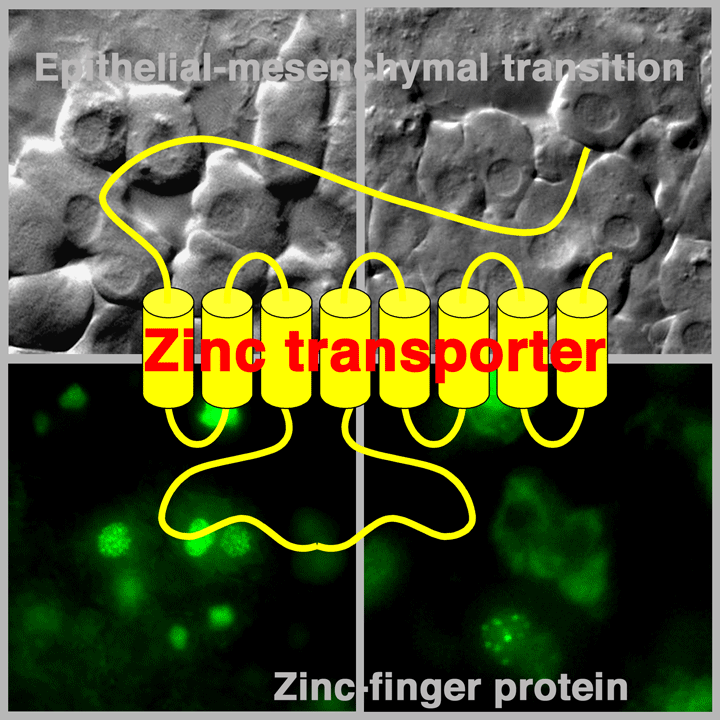
Vertebrate gastrulation is a critical step in the establishment of body plan. During gastrulation, epithelial-mesenchymal transition (EMT) occurs. EMT is one of the central events of embryonic development, organ and tissue regeneration, and cancer metastasis. STATs are also important in EMT during gastrulation, organogenesis, wound healing and cancer progression. We previously showed that STAT3 is activated in the organizer during zebrafish gastrulation and its activity is essential for gastrulation movements. The molecular mechanisms of STATŽŐs action in EMT, however, are unknown. Here we identify LIV1, a breast cancer-associated zinc transporter protein, as a downstream target of STAT3 that is essential and sufficient for STAT3ŽŐs cell-autonomous role in the EMT of zebrafish gastrula organizer cells. Furthermore, we demonstrate that LIV1 is essential for the nuclear localization of zinc-finger protein Snail, a master regulator of EMT. These results establish a molecular link between STAT3, LIV1 and Snail in EMT.
Atsumi, T*., K. Ishihara*, D. Kamimura, H. Ikushima, T. Ohtani, S. Hirota, H. Kobayashi, S-.J. Park, Y. Saeki, Y. Kitamura, and T. Hirano. (*equal contribution). A point mutation of Tyr-759 in interleukin 6 family cytokine receptor subunit gp130 causes autoimmune arthritis. J. Exp Med. 196: 979-990, 2002 (PubMed)
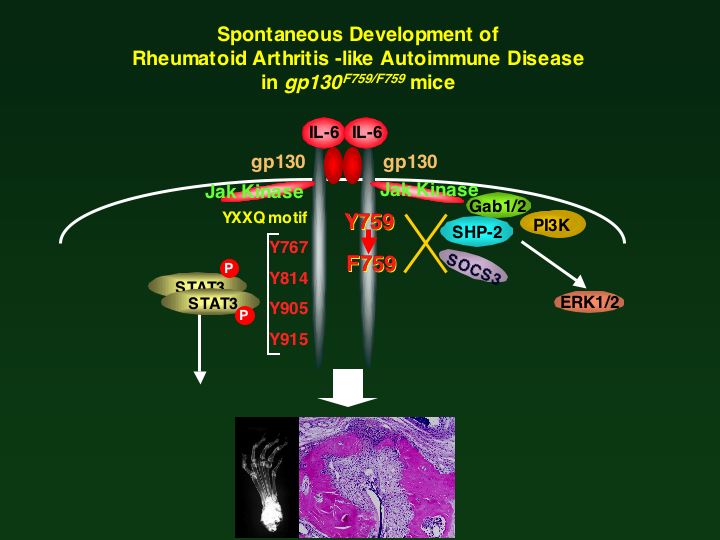
Nishida, K., S. Yamasaki, Y. Ito, K. Kabu, K. Hattori, T. Tezuka, H. Nishizumi, D. Kitamura, R. Goitsuka, R.S. Geha, T. Yamamoto, T. Yagi, T. Hirano. FceRI-mediated mast cell degranulation requires calcium-independent microtubule-dependent translocation of granules to the plasma membrane. J. Cell Biol. 170:115-126, 2005 (PubMed). (JCB) (In This Issue)
ˇˇ
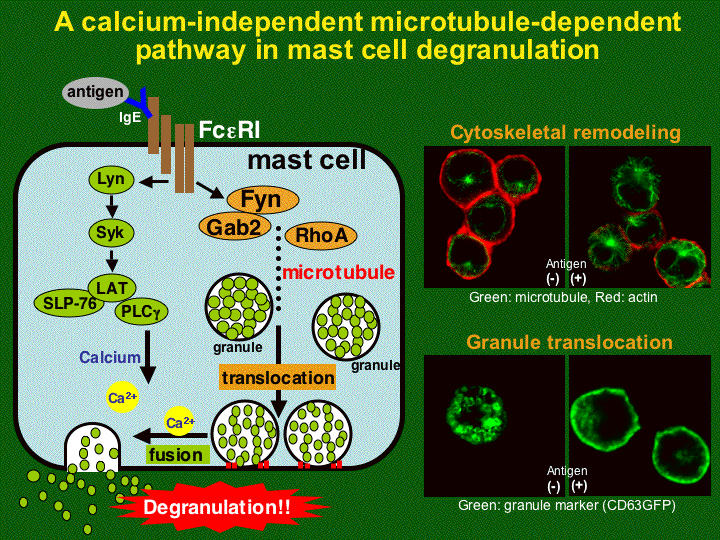
Yamashita, S., C. Miyagi, A. Carmany-Rampey, T. Shimizu, R. Fujii, A. F. Schier and T. Hirano. Stat3 controls cell movements during zebrafish gastrulation. Dev. Cell. 2: 363-375, 2002.(PubMed) (Evaluations and comments from leading biologists)
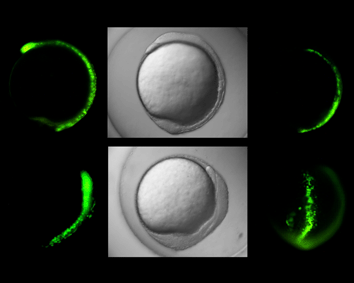
|
|
|
|
|
|
Other Sites |